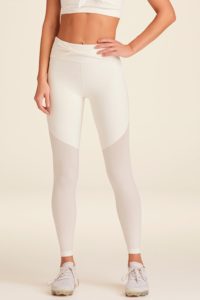“It’s paradoxical that the idea of living a long life appeals to everyone, but the idea of getting old doesn’t appeal to anyone.”-Andy Rooney
Disclosure: This post contains affiliate links. Should you make a purchase using the links, I may earn a small commission at no additional cost to you. Know that I firmly stand behind all the products I promote.
I will start this piece by formulating two questions: we all want to live longer, but is a prolonged life a healthy, happy one? And what can we do now to extend our lives?
Following the initial quote by Rooney, a long life is something that’s desired and dreaded in equal measure; longevity is a quest as old as humanity itself. The causes of aging, and the therapies that might alleviate its effects, are increasingly at the forefront of public interest and intrigue. According to some industry analysis, the longevity sector is on track to be a multi-trillion-dollar industry.
Several trendy theories affirm that aging can be considered a disease-one that can be targeted, treated, and perhaps even reversed. According to this perspective, we can be healthy and vital in our 90s and beyond in the near future.
We are not only aging longer, but we are also aging better. We are not falling apart. A 75-year-old person in 1990 was roughly the biological equivalent of a 65- year-old in 1960. Research has shown that you can help preserve your health and mobility as you age by adopting or continuing healthy habits and lifestyle choices.
In this article, I will try to answer the question Can exercise extend your life? I will focus on the benefits of exercise in general and its effects on longevity specifically. I will also provide information about the most beneficial physical activities for older adults regarding brain and heart health. I will discuss the notion of functional fitness as well.
Any exercise is better than none, but certain workouts are proven to add more -and better- years to the average person’s life.
Stronger muscles, longer life. If you want to live longer, you need to exercise. Exercise helps prevent muscle wasting, cognitive decline, and chronic illness. Muscle mass is a strong predictor of one’s ability to combat disease and even survive cancer treatments.
Additionally, exercise improves our quality of life, but it also boosts our immune system, improves our health, reduces the risk of developing many major diseases, strengthens our bones, and improves the quality of our sleep.
Based on multiple studies and experts’ opinions, I have selected the best workout routine (starting with the primary functional fitness moves and continuing with the types of exercise recommended for brain and heart health) we can choose to elongate life. Keep reading!
I personally find motivating to wear cute outfits when exercising. Find fashion, quality, and comfort shopping here

Functional Fitness Moves
To exercise for longevity, you need to begin with mobility because it’s the restricted range of motion, tightness, or injury to your joints, muscles, and tendons that makes us frail as we age. Through mobility, you want to prepare your body for the stress it will endure after taking on cardio and resistance training (more on this type of workouts to follow).
As we get older, seven functional fitness moves for longevity keep our bodies moving as comfortably and efficiently as possible.
For beautiful and high-quality workout clothes shop Alala
What does functional fitness mean?
According to the article, 7 functional fitness moves trainers say are the biggest indicators of longevity, by Zoe Weiner, “Functional fitness is working out in such a way that prepares you for real-life movements and scenarios.” Dan Castillo, an instructor at GRIT Bxng, adds, “These movements are easily transferred over to real-life scenarios such as getting out of bed, which is rising in a squat, walking up a flight of stairs, which involves lunges, falling, and pushing yourself back up, or a push-up motion, and combing over a fence, or a pull-up.”
Adding this type of movement to your workouts prepares your body for daily tasks. These functional fitness moves can assist longevity and drastically improve the quality of our life and keep us mobile and independent.
Below find a list of the essential functional strength moves to integrate into your daily workout routine:
- Squat
Of all the functional fitness moves that help with longevity, the classic squat tops the list, being the largest movement in the body.
- Rotation
Rotation is involved when we get out of bed, get up off the floor and turn to check over our shoulder when driving.
- Hinge
Hinging at your hips is critical for doing things like tying your shoes, picking items up from the ground, and reaching down to open low cabinets.
- Push
Opening a door or pushing your chair back from your desk. Pushing motions require the use of your chest, shoulders, triceps, quadriceps, and core.
- Pull
Pulling motions are the opposite of pushing ones. Pulling workouts are important for keeping your back strong.
- Lunge
The lunge is a dynamic movement that works your muscles and joints in different planes of motion and primarily targets your glutes and quads.
- Gait
Walking is one of the best types of movement you can do for your overall health. A quality gait helps us walk in alignment, allowing us to walk comfortably and with the correct posture.
Click here for discounted walking shoes
Incorporating these 7 functional fitness moves into your workout routine will make it easier to complete those daily tasks throughout your life.
Most recommended exercises for brain and heart health (cardio) and, ultimately, longevity
Swimming
According to Seena Mathew, Ph.D., a neurologist and assistant professor of biology at the University of Mary Hardin-Baylor, “Swimming is a superior exercise for your brain health and longevity. Swimming-like pretty much all other types of aerobic exercise-releases endorphins in your brain, which helps you feel better; that’s why with swimming, you tend to have a change in depression and anxiety, and over time people don’t see those symptoms as much.”
What sets swimming apart from cardio exercises like running or spinning is that it’s been more closely linked to boosting the brain chemicals associated with memory and cognition. Furthermore, when you are swimming, your whole body is working, and you are also getting that added level of resistance from the water.
From a cardiologist’s perspective, says Dr. Richardson, “Swimming is probably the lowest impact on the joints, and working on your breathing pattern is important to maximize your heart rate.”
The perfect swimming gear
Walking
The single most important way to walk your path to a longer life is to walk regularly, and generally speaking, to walk in such a way that you are consistently challenging yourself, enjoying yourself, and not injuring yourself. For added brain health, try a walking meditation, that is, walk with intention. Instead of listening to a podcast or music, try noticing the world around you. Doing a walking meditation daily can be a way to heal your mind and strengthen your body.
Walking is low impact, easy on the joints, and it works to get your heart pumping. There are many ways to spice up your steps, whether you vary the speed or add some sort of resistance.
My favorite walking shoes
Cycling
Biking, whether indoors or outdoors, is another low-impact cardio exercise that, while it’s easier on your body, gets your heart rate up. Cycling is terrific to get your blood flowing to your lower extremities, and it’s low stress on your body.
Much like cycling, cardiologists also recommend rowing for a heart rate-spiking cardio workout that boosts circulation in your lower body.
Biking gear
Resistance Training (the ultimate exercise for longevity)
Resistance training refers to moving under resistance, such as squats or push-ups. In either case, the resistance is your body weight or added weight, such as a bar, bell, or dumbbell.
Although specific anaerobic exercises add resistance to your training (circuit training with weights, for example), the best way to avoid muscle wasting (which comes naturally as we age) and to exercise for longevity is to build muscle and strength via the resistance of your own body and/or with weights. Your muscles will waste away if you don’t do some form of resistance training.
Essentials of strength training and conditioning
The takeaway
Exercise provides a remarkable variety of health benefits, ranging from strengthening bones to positive effects on mood and helping to prevent chronic illnesses such as diabetes and heart disease. A robust body of research has consistently shown that aerobic fitness may help extend lives.
We should all strive to achieve and maintain high levels of fitness. Current guidelines recommend 150 to 300 minutes per week of moderate aerobic activity (walking, running, swimming, biking), or 75 minutes of vigorous exercise, or a mix of both. Twice-weekly resistance training to strengthen muscles is also recommended.
As women, our health takes a back seat too often amid busy careers, children, and many responsibilities in our lives. We should aim to optimize our health through highly nutritious food choices, getting enough sleep, and exercising. I know it takes time and dedicated effort. Still, it is worth it and only gets easier over time as these new habits become ingrained.
Find the proper workout gear at discount prices by clicking the following link:
